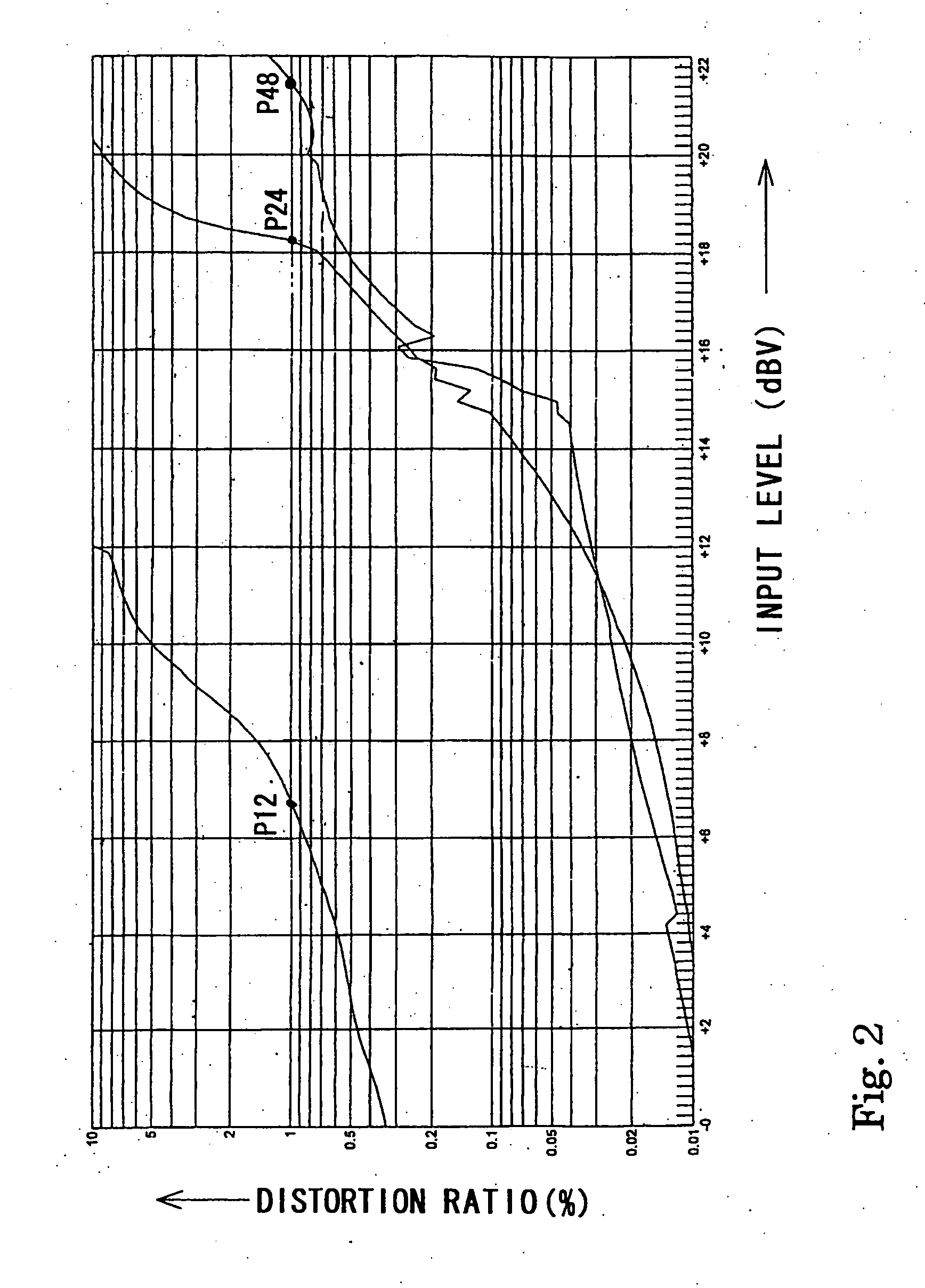Condenser microphone
a condenser microphone and microphone body technology, applied in the direction of transducer casings/cabinets/supports, transducer casings/cabinets/supports, amplifiers with semiconductor devices/discharge tubes, etc., can solve the problems of affecting the output voltage of the maximum output voltage, and affecting the performance of the microphon
- Summary
- Abstract
- Description
- Claims
- Application Information
AI Technical Summary
Benefits of technology
Problems solved by technology
Method used
Image
Examples
Embodiment Construction
[0031] An embodiment of a condenser microphone according to the present invention is explained below with reference to FIG. 1 and FIG. 2.
[0032] In FIG. 1, symbol 1 denotes an electret condenser microphone unit, one end of the microphone unit 1 is connected to an input end of an impedance converter Q1, and the other end is connected to the ground. The impedance converter Q1 is constituted mainly by an FET 2. The impedance converter Q1 is a type that incorporates bias circuit elements such as a resistor and a diode. The anode and cathode of the FET 2 constitute balanced output end and immediately after the balanced output end, a transistor Q2 as a current amplifier circuit in emitter-follower connection is connected. In the example shown in FIG. 1, however, the configuration is such that a microphone head section consisting of the microphone unit 1 and the impedance converter Q1 and a power module section including the transistor Q2, an output transformer TRS, etc., are separated and...
PUM
 Login to View More
Login to View More Abstract
Description
Claims
Application Information
 Login to View More
Login to View More - R&D
- Intellectual Property
- Life Sciences
- Materials
- Tech Scout
- Unparalleled Data Quality
- Higher Quality Content
- 60% Fewer Hallucinations
Browse by: Latest US Patents, China's latest patents, Technical Efficacy Thesaurus, Application Domain, Technology Topic, Popular Technical Reports.
© 2025 PatSnap. All rights reserved.Legal|Privacy policy|Modern Slavery Act Transparency Statement|Sitemap|About US| Contact US: help@patsnap.com



